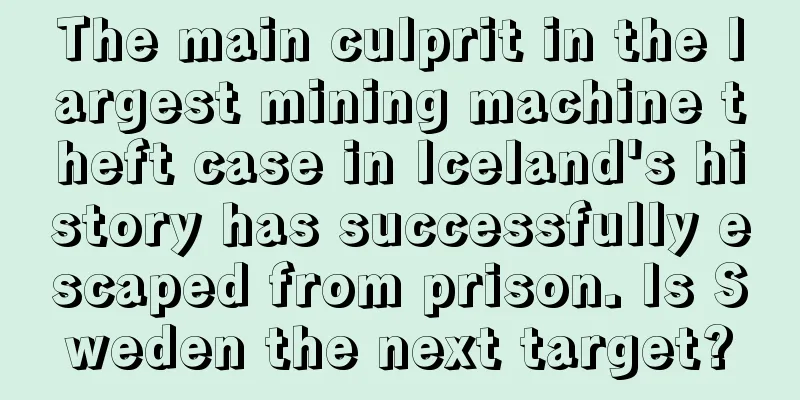Grayscale is falling from grace? GBTC continues to have a negative premium and the crazy listing of coins cannot stop the decline

|
Wu Shuo Author | Tan Shu Editor of this issue | Colin Wu This year, since the Grayscale Bitcoin Trust (GBTC) first showed a negative premium of -0.68% on February 23, as of March 21, except for two days of positive premium on February 24 and March 1, the rest of the time was traded at a negative premium. The negative premium on March 4 even reached -11.59%. Why did this happen? 1. GBTC Mechanism GBTC is a Bitcoin trust fund that holds Bitcoin and sells the corresponding asset shares of Bitcoin to qualified institutional investors through the over-the-counter market. Each share of GBTC is approximately equivalent to 0.0095 BTC. In addition to purchasing GBTC in the secondary market, institutional investors can also purchase newly issued shares from GBTC at net asset value, or convert their Bitcoin into corresponding GBTC shares. In its early days, GBTC allowed authorized partners to redeem corresponding Bitcoin assets, but this practice was fined by the SEC in 2014 and stopped in 2016. Since then, GBTC has been in a state of only inflow and no outflow, that is, funds or Bitcoin can enter GBTC, but the corresponding BTC assets cannot be redeemed and can only be cashed out by selling. GBTC charges a 2% management fee each year for the assets it manages. Currently, GBTC's assets under management are US$38 billion, which means that the annual income from management fees alone is US$760 million. Because of the non-redeemable nature of GBTC, it is different from a true Bitcoin ETF, which also causes the price of GBTC to deviate from the price of the assets it actually represents. In most of the past, GBTC has been at a premium to the corresponding BTC assets. In 2020, the average premium was 30%, and during the bull market in 2017, the premium once reached more than 100%. However, in recent weeks, GBTC has been trading at a negative premium to its net assets. 2. Negative premiums indicate that funds are flowing out of GBTC, but not necessarily out of the entire industry Previously, it was not easy for many institutions to invest in digital assets. In addition to the security issues faced by storing digital assets, they also faced compliance issues. Many institutions could not buy digital currencies according to existing rules. The emergence of GBTC filled this market gap and was the only way for American institutional funds to invest in digital currencies for a long time. Because GBTC provides a more convenient investment method, it is natural for investment institutions to pay a premium. Today, there are a large number of more competitive products on the market. Currently, Canada has listed three Bitcoin ETFs, among which Osprey Bitcoin Trust (code OBTC) has an annual management fee as low as 0.49%. For institutional investors, switching to other funds can save a lot of money just on management fees. At the same time, the arbitrage space that GBTC has long had due to its premium no longer exists. In the past, news about GBTC's substantial increase in BTC holdings often dominated the screen. This was due to the arbitrage space caused by the premium: investment institutions could "borrow" GBTC from GBTC holders, sell them in the secondary market, and use the money to buy GBTC's newly issued GBTC shares at the net asset price, plus interest, and return them to the lender. The borrower successfully arbitrages, and the lender earns interest, and the final result is a substantial increase in GBTC holdings. However, when the premium is negative, such arbitrage space no longer exists. If the net assets of GBTC can be redeemed, in theory, investors can take another arbitrage approach: buy GBTC shares at a discount in the secondary market, and sell them in other markets for profit after redemption. However, the non-redeemable nature of GBTC makes this arbitrage path unfeasible. And the management of GBTC does not seem to have the motivation to change the status quo. After all, its main income comes from collecting management fees, and the inability to redeem has led to the increasing scale of assets under management, so that it can charge more management fees. It can be predicted that after the arbitrage space disappears, less and less funds will enter GBTC in the future, and current holders may also change their positions for lower management fees and more flexible management mechanisms. For GBTC, if it cannot improve the redemption mechanism and management fees, it will be difficult to change the trend of capital outflow. 3. Can Grayscale’s crazy listing of coins change the current situation? On March 17, Grayscale Trust announced that they will provide five new digital currency trusts on the basis of the current ones, namely Basic Attention Token (BAT), Chainlink (LINK), Decentraland (MANA), Filecoin (FIL) and Livepeer (LPT). So, can such an approach change the downward trend of capital outflow? It is worth mentioning that Grayscale Trust's Litecoin-based trust product LTCN has a long-term premium of more than 1,000%. Why is there no institutional arbitrage to level it? The reason is that its liquidity is too poor, with an average daily trading volume of only 800,000 to 900,000 US dollars, and institutions are obviously not interested in participating. Currently, LTC ranks ninth in the market value of all cryptocurrencies. Among the five new coins listed by Grayscale Trust, LINK has the highest market value, but it still ranks behind LTC, and its daily trading volume is less than half of LTC. It can be predicted that if the new coins do not have a sudden surge in price or trading volume to attract new institutions to enter the market, it will be difficult to have a significant effect on recovering the outflow of funds from Grayscale Trust. (Head image from shutterstock) Welcome to read Wu's selected reports : exclusive news of mainstream exchanges , Bitmain series , supervision and card freezing series , Filecoin series , currency circle chaos , mining farm supervision news , etc. Risk Warning ▼ ▼ ▼ According to the "Risk Warning on Preventing Illegal Fund Raising in the Name of "Virtual Currency" and "Blockchain"" issued by the China Banking and Insurance Regulatory Commission and other five departments, please establish a correct investment concept. The content of this article does not endorse the promotion of any business and investment activities . Investors are requested to raise their awareness of risk prevention. Wu said that the content published on the blockchain is prohibited from being reproduced, copied, or mirrored without permission. Violators will be held accountable. |
<<: Data: For every 1% increase in BTC, BTC mining company stocks increase by an average of 2.5%
Recommend
If all ten fingers are fighting, the person is destined to be an emperor and will have many noble people in his life.
There is a saying among the people about fingers:...
What does a mole in a man's philtrum mean? Let's analyze it for you
1. Men with moles in their philtrum will have ins...
What does a mole on a woman's lower eyelid indicate?
What does a mole on a woman's lower eyelid in...
Physiognomy Analysis of the Fortune Palace of the Twelve Palaces
Happiness comes from virtue, which means that a p...
People who like to talk about others behind their backs
If you have any questions, please feel free to sp...
Is it easy for a boy with a feminine appearance to find true love? How does the relationship develop?
There are many people in life who pay attention t...
What kind of people will live in poverty?
In physiognomy, the most direct indicator of a pe...
There is always a way to get the foreign debt back.
These days, those who owe money are the boss. The...
The face of a heartless, ruthless and absolutely heartless woman
Some women are unkind and selfish in many things....
Explanation of moles on men's backs
We all know about moles. In physiognomy, there ar...
The mouth can teach you how to recognize people
The mouth can teach you how to recognize people P...
When is your best time for wealth?
Money is the source of livelihood and the foundat...
Why is Bitcoin booming in China?
Aiga Gosh is a researcher of international law at...
What diseases a person is prone to by looking at his fingers
What diseases a person is prone to by looking at ...
Bitcoin: There is a high probability of volatility over the weekend, around 30,000
Fed's Mester said that the next two rate hike...









